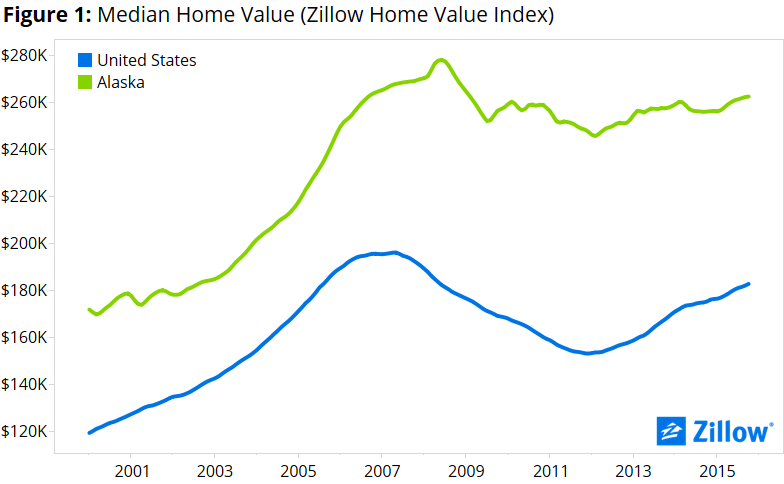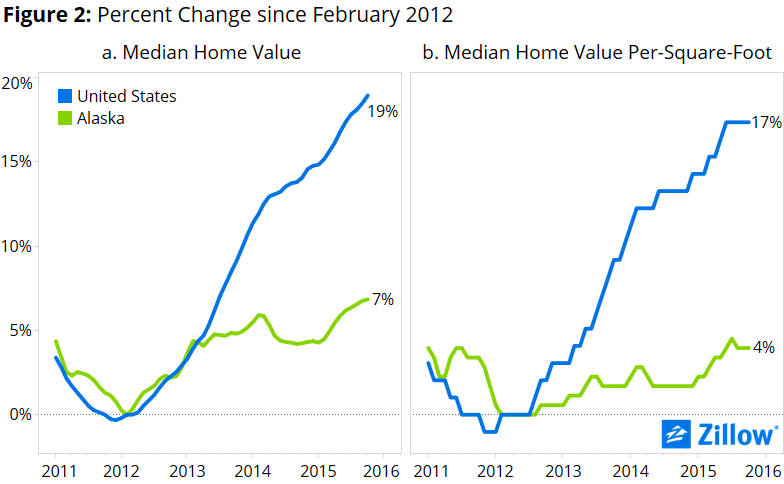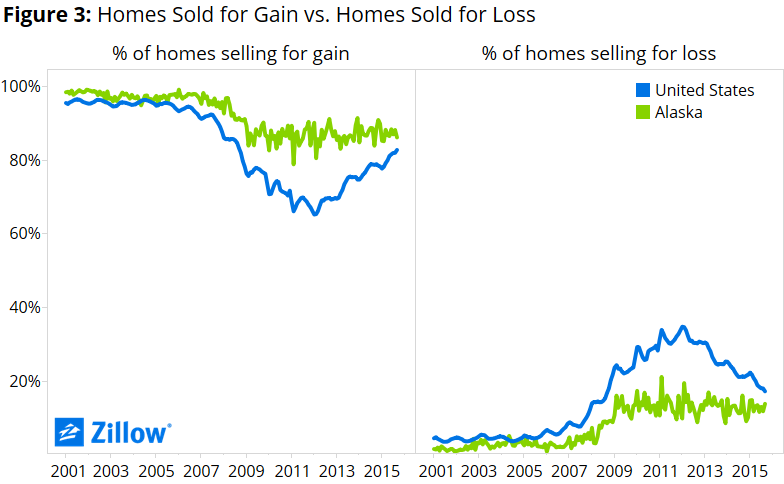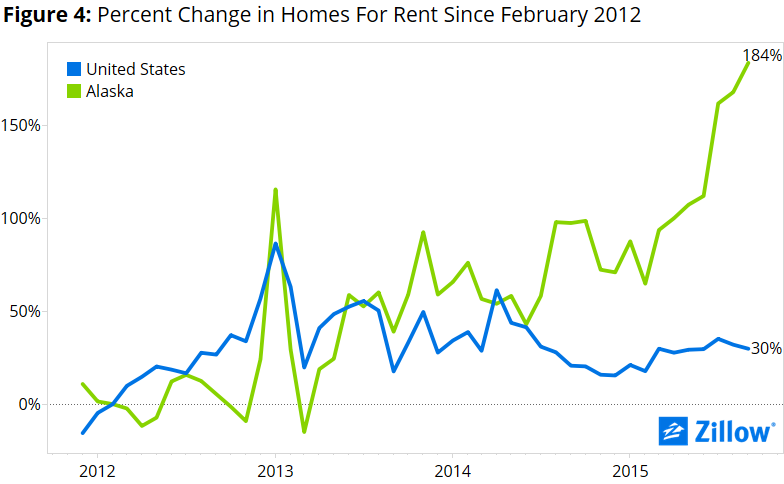Uncategorized
Housing in Alaska: Why America’s Last Frontier is Stuck in a Deep Freeze
As temperatures dip below zero and Alaskans prepare for 20-hour nights, the climate is not the only thing in a deep freeze across America’s last frontier: While housing markets in the lower 48 continue to recover strongly from the housing bust, the Alaskan housing market remains decidedly frigid.
- U.S. home values have largely recovered strongly from the housing bust, but in Alaska they have been essentially flat over the past five years.
- The number of homes for rent in Alaska has doubled over the past year, while it has remained flat nationwide.
- Alaska’s housing market is inextricably tied to the ups and downs of the oil industry.
As temperatures dip below zero and Alaskans prepare for 20-hour nights, the climate is not the only thing in a deep freeze across America’s last frontier: While housing markets in the lower 48 continue to recover strongly from the housing bust, the Alaskan housing market remains decidedly frigid.
 Throughout much of the 2000s, the Alaskan housing market boomed alongside the U.S. market as a whole. Between January 2000 and May 2007, the median home value in the United States increased 64 percent, from $119,500 to $196,100 (figure 1). The median home value in Alaska peaked about a year later, rising 62 percent from $171,900 in January 2000 to $277,900 in June 2008.
Throughout much of the 2000s, the Alaskan housing market boomed alongside the U.S. market as a whole. Between January 2000 and May 2007, the median home value in the United States increased 64 percent, from $119,500 to $196,100 (figure 1). The median home value in Alaska peaked about a year later, rising 62 percent from $171,900 in January 2000 to $277,900 in June 2008.
But while U.S. home values soon began a freefall after peaking – declining 22 percent to $153,200 by December 2011 – the median home value in Alaska fell by only half as much, dipping 12 percent to $245,600 by February 2012.
An important factor in the relative strength of the Alaskan housing market as the larger national market collapsed was the state’s historic reliance on energy-sector (read: oil) revenue and employment. For much of the mid-2000s, prices for Alaskan North Slope crude oil hovered between $50 and $70 per barrel.[1] Prices spiked in mid-2008 to historic highs, before collapsing briefly during the early months of the financial crisis. By late 2011, prices stabilized around $100 per barrel, where they remained through late 2014 – when they fell sharply to around $40 per barrel.
But unlike prior swoons in traditionally volatile oil prices, the current period of low prices has continued for much longer than initially expected. Investment and employment in the oil exploration and extraction industries have been cut, and housing in Alaska has been impacted. The Organization of Petroleum Exporting Countries (OPEC) is meeting this week to set output targets for 2016. The group’s targets typically have a large effect on global oil prices.
Although the Alaskan housing market experienced a modest recovery between 2012 and early 2014, it has been noticeably flat compared to the rest of the country. Since February 2012, the median home value in the United States has increased 19 percent, while the median home value in Alaska has risen only 7 percent (figure 2a). Over the same period, the median home value per-square-foot has increased 17 percent nationwide, but only 4 percent in Alaska (figure 2b).

Similar to median home values, the share of Alaskan homes that sold for a loss increased during the recession, although not as much as it did for the nation overall. But while the share of homes sold for a loss nationwide has since recovered, in Alaska, the share has remained flat (figure 3).

Alaska’s housing deep freeze also extends to its rental market, with rental vacancies doubling this year alone. Low rental vacancy rates nationwide have helped push U.S. rents up. But in Alaska, the number of homes for rent has increased sharply over the past year. Compared to February 2012, the number of homes for rent nationwide is up just 30 percent, and over the past year has been largely flat. But over the same period, the number of homes for rent in Alaska has shot up 184 percent (figure 4). The increase coincides with the collapse in oil prices which began in mid-2014 and accelerated in December 2014, which likely spurred many rig workers and engineers to vacate their apartments after work in the state’s oil fields dried up.
 The oil industry has historically been a blessing to Alaskans. It has created thousands of jobs in the state, and contributes the lion’s share of state revenues. During the worst years of the housing bust in the lower 48, the industry provided a strong backstop for Alaskans, preventing the state’s employment and housing markets from dipping as much as in other states.
The oil industry has historically been a blessing to Alaskans. It has created thousands of jobs in the state, and contributes the lion’s share of state revenues. During the worst years of the housing bust in the lower 48, the industry provided a strong backstop for Alaskans, preventing the state’s employment and housing markets from dipping as much as in other states.
But with oil prices holding near historic lows, the oil industry’s challenges have become an Alaskan housing challenge, too.
[1] Alaskan North Slope crude spot prices from the Alaska Department of Revenue, Tax Division.




